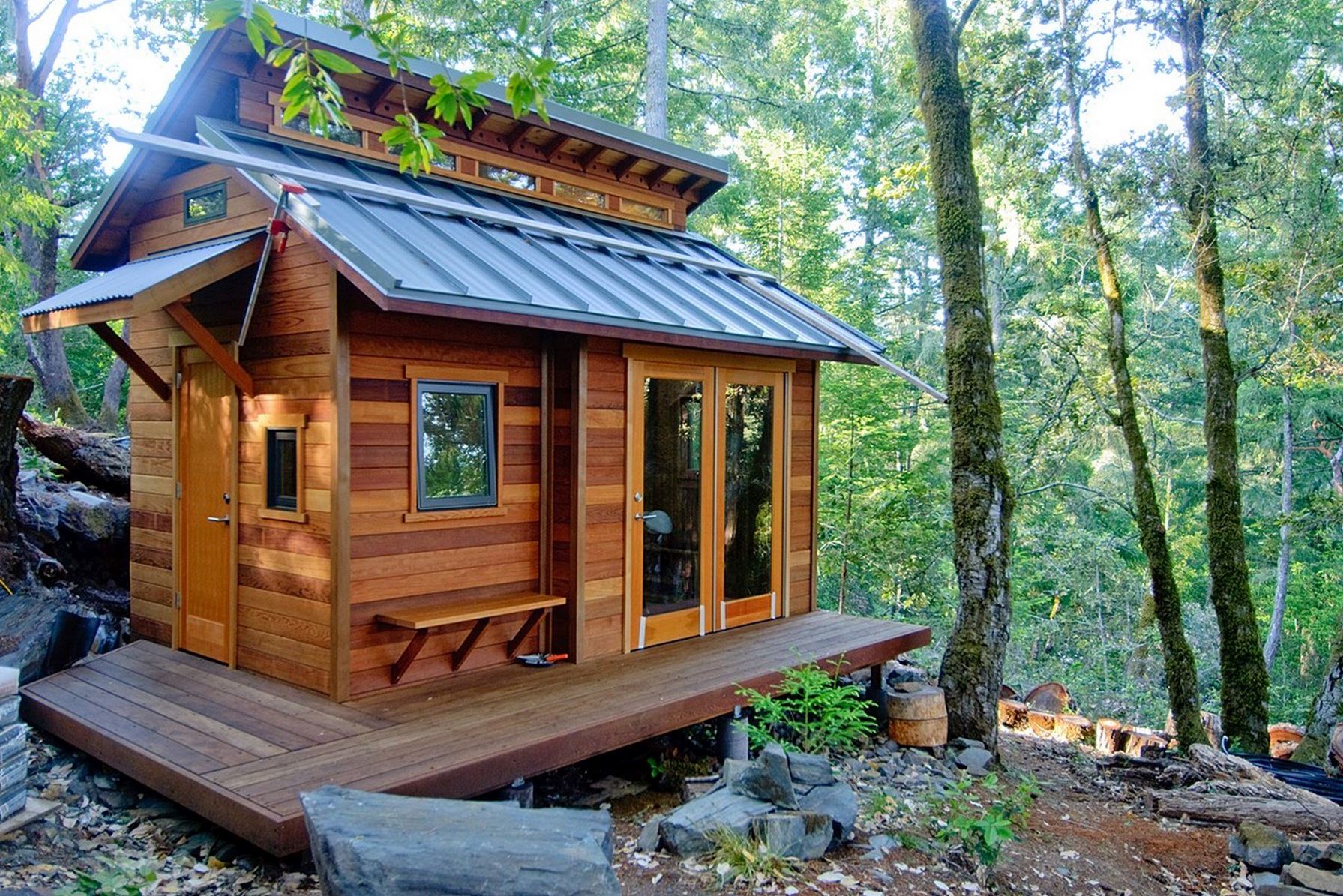 By Joshua Polk
By Joshua Polk
In response to the 2008 recession, rising home prices, and a growing demand for mobility and sustainability, a new entrepreneurial movement burst upon the housing market: Tiny homes.
Tiny homes are permanent living spaces usually running between 100 and 600 square feet. Offering relatively low-cost living, eco-friendly designs, and lifestyle flexibility, tiny homes have become a genuine phenomenon appealing to a wide range of consumers. Adventure seekers, the environmentally conscious, and people hoping to downsize their life have flocked to tiny home builders for their chance to “live small.”
Featured on HGTV’s Tiny House, Big Living and, more recently, The Sims 4 video game, tiny home living has been pushed to the forefront of American pop culture. And demand for tiny homes is growing. According to a survey by the National Association of Home Builders, more than half of Americans would consider living in a home that’s less than 600 square feet. For millennials, that number is even higher.
Tiny homes are also a potential low-cost solution to the homelessness crisis.
Tiny Homes, Big Obstacles
But despite widespread popularity and potential, there is a bevy of obstacles to tiny home living. State and local governments have been slow to facilitate the burgeoning market, which has made living in tiny homes illegal in many places.
Municipalities regulate housing based on minimum lot sizes and minimum dwelling sizes. At around 400 square feet or less, tiny homes usually cannot meet these requirements. Tiny homes defy easy classification as RVs, mobile homes, or backyard cottages, and this difficulty has led to outright prohibitions in some places and legislative battles in others.
In Maine, entrepreneur and engineer Corinne Watson makes her living building and selling tiny homes on wheels. But her ability to earn an honest living was put on hold when the government stopped providing titles and registration for tiny homes on wheels, making it harder for potential buyers to obtain financing.
One of the reasons the government took this action was an inability to adequately classify tiny homes. Most commonly, governments have labeled tiny homes on wheels as RVs. Though tiny-homes on wheels operate with the stability and roadworthiness of RVs and other types of trailers, they are different in important ways.
Unlike RVs or camp trailers, tiny homes are designed for permanent living. They provide a full gamut of appliances and necessities and are stick-built like traditional houses. Despite this, “camping” bans on RV living often prohibit long-term living in tiny houses as well.
Burdensome Regulations
While some localities have tried to facilitate tiny homes, these developments have been slow going and are often ineffective. Even municipalities that have legalized tiny home living have maintained lot size restrictions that make tiny home production and placement impractical.
For example, in Boulder, Colorado, 7,000-square-foot lot size minimums paired with a hard limit on the number of dwellings that may be placed on a single lot have diminished one of the primary appeals of tiny homes: spreading the high cost of land across multiple dwellings.
These restrictions have forced some owners to put their tiny homes in storage, along with their dreams of a minimalist lifestyle. Zoning regulations even have put a halt to efforts to use tiny homes as a living space for the homeless. In Minneapolis, a city where the homeless population has been ballooning for years, housing advocates have hit one roadblock after another, ranging from overly restrictive land use ordinances to inapt “camping” bans.
While there are some cities, like Spur, Texas, which have declared themselves havens for tiny homes by striking down barriers to tiny home building and placement, tiny homes still have many obstacles to overcome. In addition to slow-to-modernize government regulations, tiny homes have faced pushback from activists concerned with the “character of their neighborhoods.” Activists like these have pressured local government councils to bar tiny home living in their community.
It should not come as a surprise that the government has failed to keep up with the evolving tiny homes market. As economist Friedrich Hayek warned, central planners simply cannot know enough quickly enough to respond efficiently to a swiftly evolving market involving thousands or millions of transactions. The result is a gauntlet of ill-fitting regulations and counterproductive restrictions. Nowhere is this more evident than the forest of red tape surrounding tiny home living.
Housing advocates and people wanting a downsized lifestyle have embraced tiny homes. Unfortunately, the tiny homes market, thriving on dynamism and versatility, must operate within a system marked by sluggish rigidity. If allowed to flourish, tiny homes can offer solutions to the housing crisis, rising costs of living, and population displacement.
However, before these benefits can be fully realized across the country, governments have to get out of the way of progress.
Article source: FEE.org
Joshua Polk is an Attorney for Pacific Legal Foundation. He practices within several of PLF’s litigation areas including economic liberty and property rights.
Image credit: Ben Chun on Flickr | CC BY 2.0 (https://creativecommons.org/licenses/by-sa/2.0/)